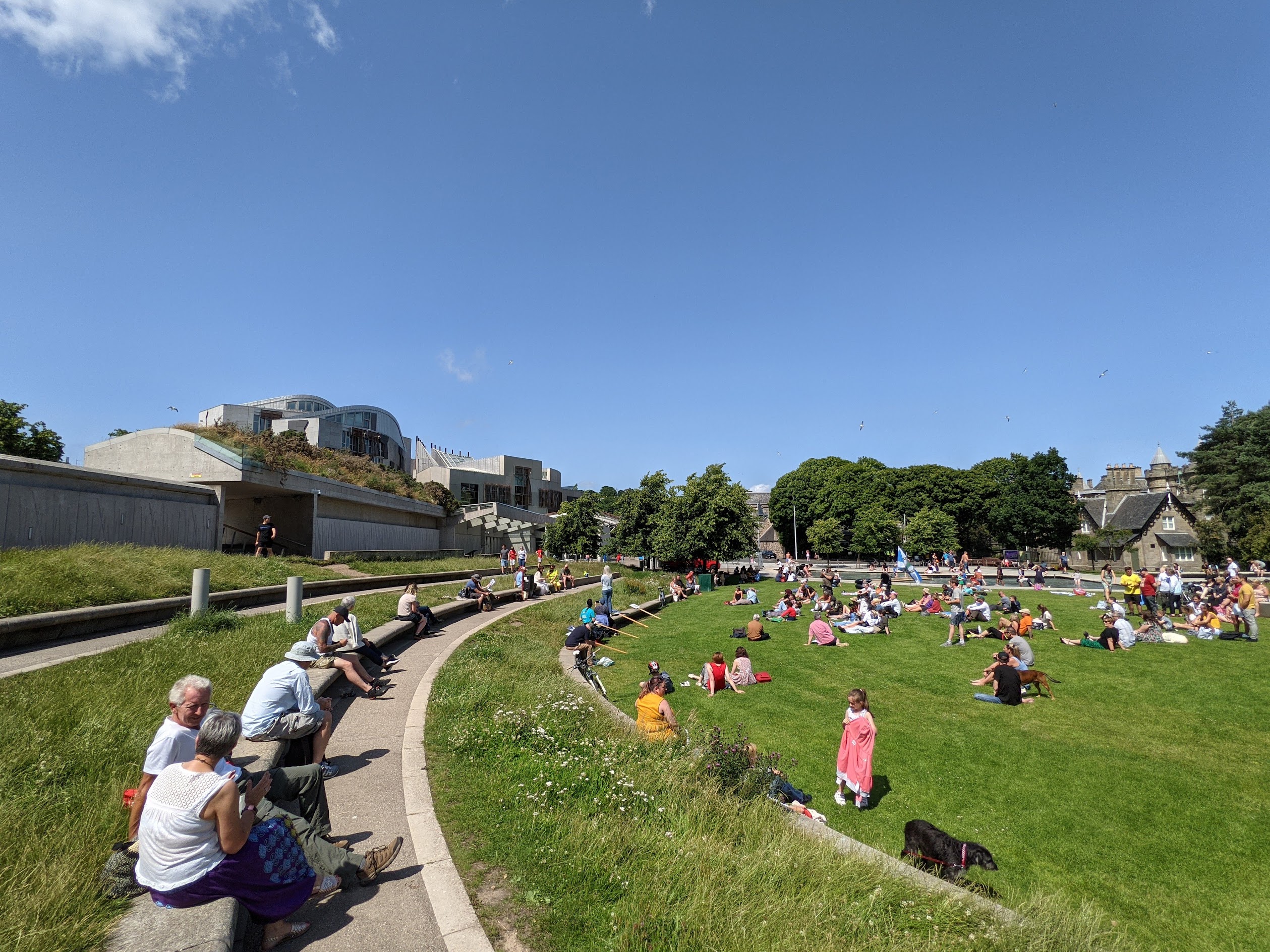The IUCN Local Action Summit took place on 3 September 2021—the opening day of the IUCN World Conservation Congress—in Marseille, France. Leaders convened to showcase and galvanise conservation efforts in cities and regions, make the case for a nature-based recovery to COVID-19, and announce ambitious action pledges for nature. The Summit included four roundtables, the first of which focused on ‘Advancing ecological urbanism.’ A transcript of this roundtable is outlined below.
Moderator
- Russell Galt
Speakers
- Jonny Hughes, IUCN Councillor and Urban Alliance Chair
- Robin Grossinger, Senior Scientist, San Francisco Estuary Institute
- Pablo Lopez, Urban Nature Index Project Lead, IUCN Urban Alliance / Urban Biodiversity Hub
- Darlene Upton, Vice President, Protected Areas Establishment and Conservation, Parks Canada
Roundtable transcription
Russell Galt (RG): For this next roundtable we’re going to explore the theme of ecological urbanism. Sounds very academic. I’m not going to define it. I think Jonny will do that for us. So the idea is to discuss how cities can transition from being almost leeching parasites on the landscape to becoming regenerative, vibrant systems, greener, healthier, wilder systems that deliver this myriad of benefits we’ve been hearing about this morning. So Jonny, please would you be able to frame the issue describe it to us and why is this important? Thank you.

Jonny Hughes (JH): Thanks. Thanks very much, Russell for those who went to the summit earlier on this afternoon. My name is Jonny Hughes. I’m a IUCN counsellor. I also chair the IUCN Urban alliance and in my day job, I work for the United Nations Environment Program with conservation monitoring centres, the CEO of WCMC, so it’s quite a lot there. Yeah, so ecological urbanism, when I start, I think, maybe start with a conversation in a pub that I had about 15 years ago with an architect and urban designer who was then working for Prince Charles and the Prince Charles initiative on the built environment. I was very much coming at the conversation in the pub from an ecologist perspective, I was talking about the need for recovering natural assets in cities and recovering the connectivity between fragmented habitats in cities, improving structural diversity in our parks and urban spaces. And he was very much coming at the conversation from a from a urbanism perspective, beautiful architecture, amazing neighbourhoods which are vibrant, mixed use, have fantastic transit networks, which work well as well as sustainable. It made me realize that maybe I should be thinking, putting myself in his mind for a minute, as well. As asking him to take an ecological perspective. And actually, what came out of these conversations was this concept of ecological urbanism, which I then Googled. I thought, we’ve come up with this new paradigm you know, ecological urbanism, I now realized, that a professor at Harvard had written a book on it. So we didn’t invent it, certainly, but we did then we tried to set out some principles of what the this ecological urbanism might look like. Blending this idea that you can you can actually take ecological principles and they have a mirror, they have a corollary within the urban design world. So if you take naturalness for example, there’s this kind of mirror of naturalness in the idea of vernacular locally adapted architecture and, and solutions to urban planning. If you take something like structural diversity, there’s a parallel there. With within cities, within neighbourhoods that have mixed use and diverse and vibrant if you take a concept like ecological connectivity, there are parallels again within the urban realm of mixed use integrated transit systems. So we thought if we can meld these two things together and bring these two worlds together, surely that’s better and let’s face it, that has oftentimes I think, in the history of ecological cities being tensions between the people that want more green space and better green space, and people that want vibrant, functional neighbourhoods. But I think the future lies actually in relieving that tension by actually melding these two worlds together and bringing these two disciplines together in a completely new way of looking at cities. And thinking about the underlying armature of cities, the foundations on which the city is built, the ecosystem on which the city is built, and using that ecosystem to actually develop all sorts of solutions and this is where the concept of Nature-based Solutions comes in. Solutions to societal community and economic challenges that cities might face. So I think this is a really exciting moment actually in the history of urban ecology. Because we are, we are seeing finally, partly I think, because we are facing a crisis, we know that 500 cities globally are going to be affected by sea level rise. 800 million people could be displaced by 2050. So there’s an immediate crisis. That is that is pushing this need, but there’s also on the opportunity side, massive benefits to be gained from taking this new approach of bringing ecology and urbanism together, hence ecological urbanism. So that’s the framing of it. I think, I just want to say something quickly on Nature-based Solutions, which are mechanisms to achieve ecological urbanism and picking up some of the conversation from the from the last session is that Nature-based Solutions, you know, by their very definition, they must deliver for nature, but they also must deliver for people for communities, for indigenous peoples. They are solutions to societal problems, economic problems. The kinds of problems that many neighbourhoods face. And if they’re not doing that, then they are nature based positions not solutions, so I think that’s a really important point to make. I think I’ll probably stop there just wanted to put that as it’s rather conceptual scene setter. I think actually, it’s an important one because this is bigger picture thinking. And I think, yes, we can get down into the specifics. But you know, the 21st century I think will be defined, by the way we begin to rethink re-evaluate and redesign our cities in the context of nature and what nature can do for communities. So without further ado, I’ll allow you to go into some more specifics about how we might achieve this, which of course is a very important thing.
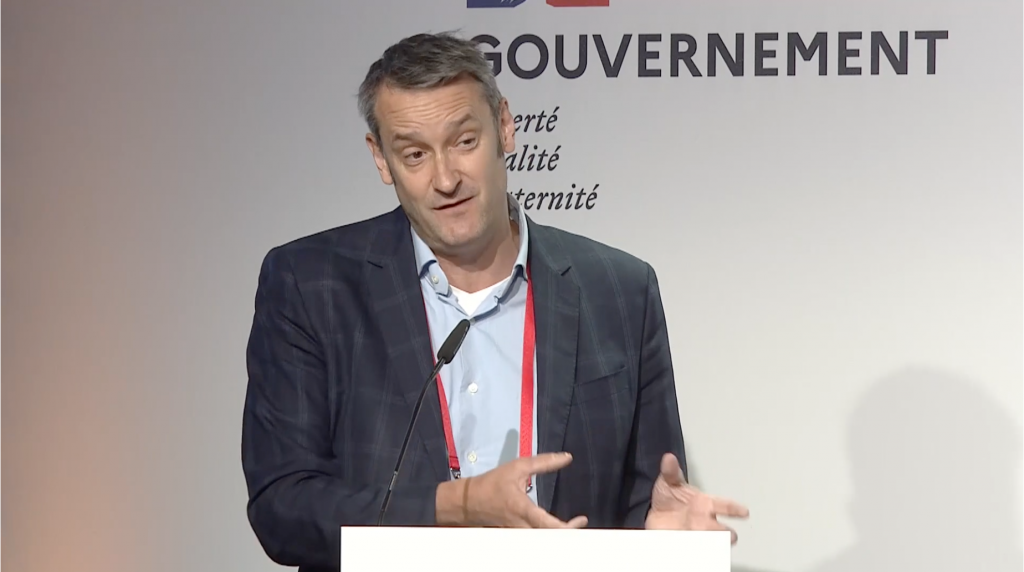
RG: Thanks, Jonny. That’s great. I am just going to turn now to the director of the Urban Nature lab at the San Francisco Estuary Institute. Robin Grossinger, are you with us? So Robin, we’ve been collaborating quite a lot recently. Primarily around the making nature city publication that the San Francisco Estuary Institute prepared just a couple of years ago, and it articulates I think, seven elements for bringing biodiversity back into the built environment, might you be able to explain what they are? And also, perhaps you can tell us a little bit about the Urban Nature Lab, which I know is relatively new, and that you are now directing for the benefit of the audience. Thank you.
Robin Grossinger (RGr): Yeah. Sure. Thanks. Great to be there. So I lead a team of ecologists and urban designers at the Urban Nature lab, and as Russell mentioned, really focused on the challenge that Jonny just posed is how do we bring architecture and urban design together with ecology? How do we build a language and communication between those very different fields to really complex systems, how the city works, how nature works, which are both overwhelmingly complex. So this lab is having scientists in California in the San Francisco Estuary Institute and we really tried to make the quantitative research there’s quite a lot about how nature works in cities and then work closely with planners, designers, city staff, community members, to develop tools that kind of answer to their questions, make it more tangible because one of the gaps that we can address. There are many challenges and gaps, it’s giving more specifics about what do you attribute to increase nature? And that is found very vague, ecologists are famously vague and resistant to giving specific guidance and if we’re going to compete with all the other drivers, we need to give more details in their language as Jonny said. So the project that we’re working on along these lines is called ‘Making Natures City’ and it is to address this challenge that there’s so many landowners so many managers of the land in which space and money is limited and there’s so many different actions. How do we consider a holistic approach? How do we develop holisticness? That is what our partners are asking us is, how do we go about holistic strategies, that is interconnected, and brings all these different little things that you can do that are obviously disparate and disconnected into a sort of functional ecosystem that reports back diversity in the challenging setting of the city. So we’ve synthesized hundreds of research papers about urban ecology, from cities around the world to identify the key drivers of urban biodiversity. A site or a neighbourhood or city to really support diverse plants and animal species successfully, and how these elements work together. You know, from Parks and street trees to green roofs and windows, all these different pieces have need to work together synergistically. So we have identified seven elements and a number should go through all of them. They range from obvious things like, you do need patches of nature, and the bigger they are, and there are some thresholds that give you different levels of support, different types of connections between those. They can be greenways, stepping stones and we can give some guidance as to what’s better and what works. There’s also a lot of alignment of course with with people. You know a lot of the things are going to make the city better for nature, are going to make things better for people, like controlling light pollution and reducing traffic and making more walkable. So Jonny says that these really are synergistic. We have an animator that did a good job showing that. So where we are now is we’ve developed a report and UN Habitat lecture online. And now we’re working and taking this design framework language into a website that we are developing with Russell and the Urban Alliance, and with Google’s ecology program to make all this information and kinds of tools available online so that cities around the world can use them, as well as precedents, which we find a really important examples of all of these different things, most cities have come out in many cities come up with different pieces of the puzzle. How can we put that all together into a tool set? So that will be available online or the next year but there’s also the foundational research is already there. So I will stop there.
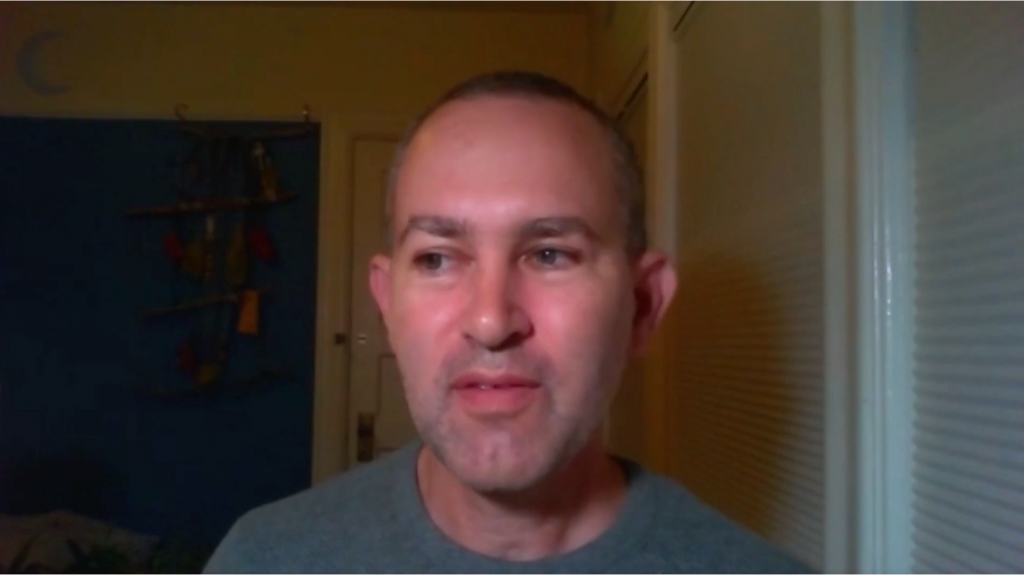
RG: that’s fantastic. So you can actually find this ‘Making Nature’s city’ report online already as a PDF. And but it will be, as Robin said, made out into digital platform as well. And actually do check out the Urban Nature lab at San Francisco estuary Institute. They’ve got a really superb team of scientists working internationally increasingly. Now I want to turn to Pablo Lopez. So, we’ve heard about the sort of academic framework the conceptualization of ecological urbanism, we’ve heard about some of the important planning principles for bringing biodiversity into cities. But how do we measure progress? Well, we’ve had the pleasure of working with urban biodiversity hub, a very, another very talented team of urban scientists and policy makers, and we’ve been working with them to develop a tool which actually Jonny conceived some years ago, I think in Hawaii, possibly four years ago, perhaps, or even longer ago. He’s been dreaming about it for decades, but the Urban Nature index, and this is made possible due to the very generous support of Arcadia Charitable Fund, Lisbet Rausing and Peter Baldwin. And I’m very excited to welcome Pablo. I don’t know if the microphone works. Can the technicians please switch on the microphones? Great, great, thank you so far, but might you be able to explain what is the Urban nature index? What how is it different to the myriad of other tools available to cities and what are we seeking to achieve with it? Thanks.
Pablo Lopez (PL): Good afternoon to everyone. Good morning, wherever you are. So today I’ll be presenting the Urban Nature index. This is a product that we developed in coordination with the IUCN Urban Alliance and consultancy team by the Urban biodiversity hub. This index incorporates two models. The DPSIR model, which stands for drivers, pressures, state, impact, response model as well as the Urban biosphere impact areas model. These index organizes a selection of indicators into six different themes, each of them containing five indicators following the DPSIR model. So the different things through which we organized the nature index are human pressures, habitat status, species status, nature’s contributions to people as well as governance responses. Each of these themes is divided into five indicators making it a total of 30 indicators. Each of the indicators will have an intent instructions, alternative resources, and finally, a scoring mechanism. So, there are several ways in which we can use and implement the Urban Nature index. But first of all, I will tell you a little bit about the development process which as Russell quickly mentioned. Initially, we received initial guidance from the IUCN technical expert group. Then, we’ve made a review of literature and other similar initiatives. I will tell you in a bit how this is different. We prepared an set of indicators which we reviewed with IUCN and with a survey with 24 cities as well as six pilot cities. Finally, we made a revision of these indicators and we incorporate all the feedback that we have. This cities, I want to acknowledge them and I want to thank them as well, they were Singapore city, Paris, Mexico city, Lagos, Curridabat in Costa Rica, Saanich in Canada and Edinburgh. We receive feedback from all of them from about being mindful about political or cultural sensitivities, clarifying the indicators, and we also tested the Urban Nature index so how is this Index going to work. Every one to four years, these cities will first answer a capacity questionnaire. This is the Capacity Assessment questionnaire. This will tell us or tell the cities many indicators they should use for the index. So it can be anywhere between six to 32 or 30 indicators. So 6 it would be one indicator for each of the themes. And if the series have enough capacity that means resources, technical expertise, people working there, as well. If they have enough, then they can complete the 30 indicators. And they can also complete the advanced indicators for each indicators. Not for all of them, but for most of them we have a basic and an advanced way to reply to these to these indicators. And once the cities do this, they provide in the platform that is to be developed yet they will be able to get a scoring and they will see how are the trends going in terms of the nature in the cities. So they can improve, they can increase or they can establish a baseline. So I think this is the urban nature index Russell.
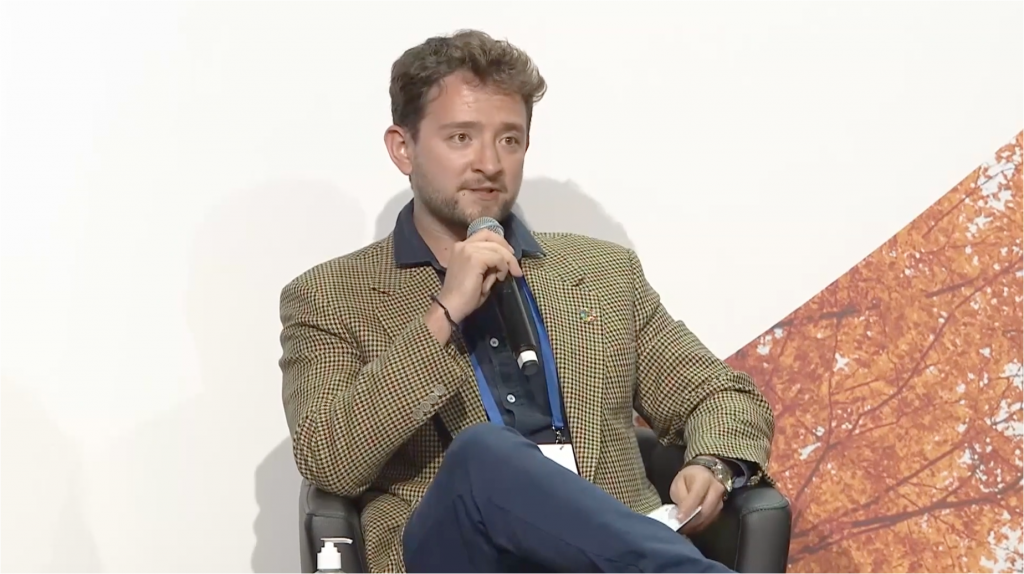
RG: that’s great. That’s great. I think we got the gist of it and thanks for spelling that out. I think that’s really important here is the important point here is that we’re not trying to duplicate with this new tool. We’re trying to complement the existing array of tools and the fact that it looks more holistically at sustainability. So by examining ecological footprint and bio-regional impacts as well, we’ll hopefully add great value to cities and also subnational governments which are of course, urban regions as well. Now let’s hear from the policy angle. I don’t know if you’re aware of what’s happening in Canada, many things are happening. In Canada, but some very good news has been washing across the Atlantic with regards to urban nature. We have with us I believe Darlene Upton, Darlene, are you with us? Excellent. Thanks for joining so Darlene is the vice-president for protected areas establishment and conservation at Parks Canada, Parks Canada is a government agency and very important IUCN member so yes, tell us about this good news. What’s going on in Canada, Darlene?
Darlene Upton (DU): Yeah, thanks a lot Russell and thanks for the previous speakers. It’s a really amazing subject. So yeah, I’m happy to join everyone this morning and share that earlier this summer we launched a new program for the creation of a network of national urban parks in Canada. So this work is building off over 110 years of history and the creation of national parks, marine conservation areas, national historic sites in Canada and more recently in 2015, our first national urban park in Toronto, as I think we’ve all seen worldwide, the impacts of COVID brought kind of a stark relief and you know, underlined the critical importance of green space to our health and well-being. And that’s particularly important in Canada. 82% of Canada is urban. So a lot of people think of it as quite empty, but most of the people live in the same area that are highly urbanized. So Parks Canada is now working and collaborating with municipalities, provinces, indigenous partners and conservation organizations, among others, to see more opportunities for creating and expanding national urban parks, in urban and near urban areas in Canada. And we’ve learned through our experience that urban parks can really support three really important outcomes. They can support nature. So that’s including biodiversity conservation, and climate change mitigation and adaptation. They can connect people by being welcoming and accessible and providing opportunities to learn about local nature and culture. And it can also support reconciliation with indigenous peoples by promoting indigenous knowledge, voices, stories and offering opportunities for connections to lands and waters. And as we also know, there are many other benefits such as avoiding health care costs supporting local tourism, and local economic development. We know from the Rouge Park that protects over 1700 species 24 of those are species that are at risk, it created over 200 direct jobs and provided about $144 million a year in ecosystem services. So there are a lot of benefits to supporting and being a catalyst for more urban in nature, urban in our nature as we’ve been talking about this morning. There’s a lot of excitement, momentum around this in Canada right now. And we’re really appreciative of the opportunity that platforms like the IUCN Urban Alliance provide to share our experiences with our international colleagues. As well as to learn from best practices of others around the world. So as our work advances, we really look forward to sharing more about how it’s going.
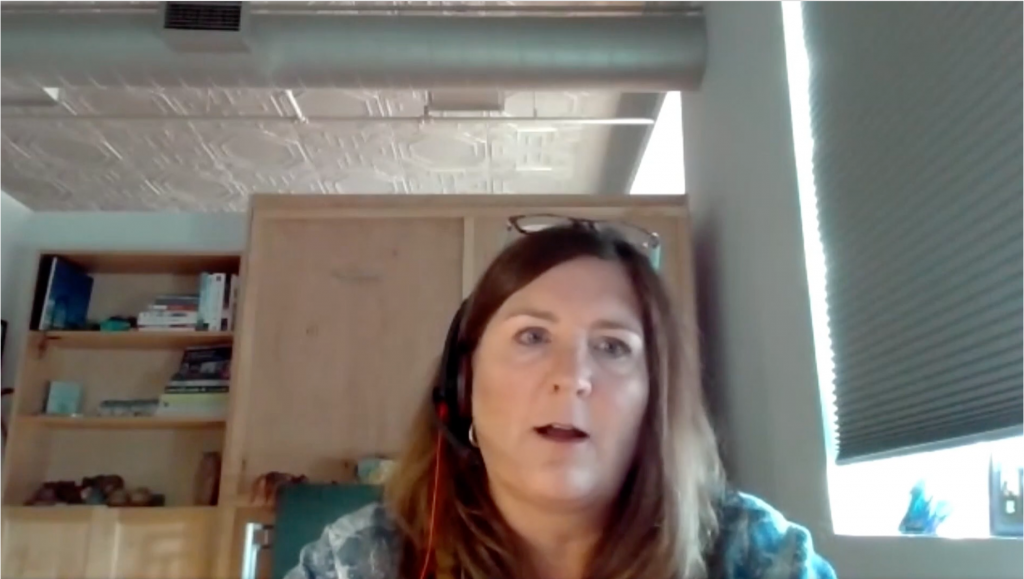
RG: Brilliant, thanks so much. You heard it. There’s a National Urban Planning program in Canada. What an inspiration I hope other countries will consider following suit so we’ve got some time left for a discussion. You’ve heard from some of the world’s leading voices and authorities experts on the subject, and I’m sure some of you have some questions.
Audience question 1: I wanted to ask you, whether in order to make progress in the urban context, should use concepts of a mathematical nature, or rather pictures that allow people to see how things are moving along.
Audience question 2: The question is, what is the difference between the Urban Nature Index and Singapore index?
RG: Okay, How’s your French? I don’t think Jonny’s English is up to scratch. Did you understand the first question? Okay, and then maybe Jonny can actually answer the second one. Or Pablo?
PL: Thank you. So I will start with the second question, which is directly related to the Urban Nature Index. So we actually work with the city of Singapore in developing this index, and we integrate a lot of feedback from their city representatives. So this index, actually, what it has, it is flexible. It provides procedures for different capacities and different contexts. It is also comprehensive, as it only focuses on outcomes towards biodiversity and conservation in all different scales. It’s also science based, and it’s also improvement oriented. That’s also something that we have that in mind. And it’s also collaborative, which means that we are we it harnesses existing similar initiatives such as the Singapore index, so for example, whenever the cities want to complete one indicator if they have the alternative of using the Singapore index, for example, or other different indexes that exist, so I think perhaps this answers your question.
JH: Yes, I mean, I think it’s important to say that the Singapore Index was, in some senses inspiration for what we’ve done with the Urban Nature index, but the index because it’s sitting within the IUCN and the IUCN is a developer and custodian of several global knowledge products and standards such as, you know, very famously the IUCN Red list. We thought that the leverage that we could generate through the IUCN networks, for hopefully the widespread adoption of the Urban Nature index very much obviously implemented it within a local context. It’s an international standards which is applicable in a local context. We thought that would add considerable value or something that was missing from the tools and methodologies which currently exists including the Singapore index, but we very much been working with our colleagues in Singapore to develop what we’ve done. And building on that pioneering work because it was amazing pioneering effort in Singapore. So yeah, maybe that just adds a little bit of context there, but I would just come back on the Urban Nature Index. I would come back to this point about action and urgency because this is not about more measurements for measurement sake. This is measurement in order to create a baseline which they can you can then set some science based targets to drive action within a within a urgent timescale. So you know, once you’ve done the benchmark for the Urban Nature Index, we would hope that the cities that are that are doing that working with us on that would say okay, in 3/4/5 years’ time we want to take that indicator and take it from here to here. They will need to develop a concrete set of actions in order to achieve them. So then the open nature index becomes a driver for change, and also a way that then the cities can report in to the global effort that is happening in cities linked we hope in time to the conventional biological diversity as well. So, it builds very much on what has gone before. And I think we should be thanking the Singapore index for the pioneering work they did.
RG: And also for helping us to develop it. Singapore was, of course one of the pilot cities and took part in these long workshops often late at night to help us put together the indicators. I must confess, I didn’t catch the first question. I was hoping one of you spoke better French than I do. Would anyone be so kind as to translate for us please. Thank you. Maybe could I just relay the question for the audience. And also for Darlene and Robin, who I think are still with us. So the idea was, do we need concrete metrics, numbers and methodologies in mathematics or is there a more perhaps artistic way to instigate change, perhaps through images, videos and multimedia? So maybe Darlene, I think if I’m reading the question correctly, it’s touching on the cultural agenda as well the nature of culture agenda. Darlene or Robin, might you be able to respond to that question?
DU: I can start if you want Russell. just quickly I would say, I do think you need them I think. I think the great thing about the urban spaces is the opportunity to create a vision, and inspire people and I don’t think you need metrics to do that. But ultimately, at some point for funders and for demonstrating success and measuring at some point, it’s nice to have a metric to know kind of where you started and where you’ve gone. But I think the really important thing is creating a strong vision that really inspires people to see the value of more nature in their urban life.
RGr: Yeah, I agree. I like that question a lot. And I would say the driver is inspiration, the desire for connection, natural heritage, those are the reasons we get traction. But ultimately, when you’re competing with all of these other drivers, you know the width of the street that utility corridor. Everyone else has numbers, how and what they want engineers and the designers, so we have to be more specific. And so giving specifications and targets I do find that there’s a lot more responsiveness tot that than just sort of a vague ask by. There’s the inspiration that just we want more nature, we want it everywhere, we want water. They do need to know to some extent how much is enough to achieve certain things, so that otherwise we’re not really part of the same conversation, because we’re not talking in numbers, you know, like everyone else, who’s at the table.
RG: Thanks. Yeah, I think that’s a really good point. You know, if we want to bring about transformative change, then we need to reach a scale of audience in a very, very little amount of time need to reach a massive scale of audience and in order to do that we need to work with culture makers, artists, poets, musicians, people who are naturally adept at capturing and moving hearts and minds. And actually, I think maybe one lesson we can all learn is to encourage artists, poets, musicians to come to conferences like this and work with us, they can help to convey some of the ideas that we are generating. We have a few more minutes. Maybe any more questions, in fact do the panellists have any questions for each other? I don’t know if any of you had actually met before. Today, so maybe it’s a good opportunity for you to ask those burning questions you may have from one another. No, Okay, well, why don’t we conclude shortly but firstly, I would like to ask each of the speakers and panellists in tradition to convey in one key message to subnational governments, and also to be IUCN members. So in less than 25 words, what is your take home message? Starting with Pablo please
PL: My message will be, use the urban nature index
JH: I would concur with that. My message is that the 21st century is the century of the city and particularly this transformation that cities will undergo towards this ecological urbanism model of functioning. It’s going to happen but I think the people in this congress over the coming days and the community that will gather here are absolutely critical to accelerating action in this area. Sorry it’s probably more than 25 words.
RG: We can we can make it treatable we will sort it down. Thanks for that. Robin.
RGr: Yeah, so the sound of birds, the shade of a tree and a patch of nearby nature must be human right for all urban dwellers.
RG: Thanks Robin, and Darlene.
DU: That was very poetic Robin. Yeah, listen, I would say nature and urban is extremely important. It can really achieve some positive outcomes around biodiversity, climate Resilience, connecting people with nature and culture, and also supporting reconciliation with indigenous peoples.
RG: Wonderful, thank you. Let’s give a round of applause to our wonderful panellists and speakers.
